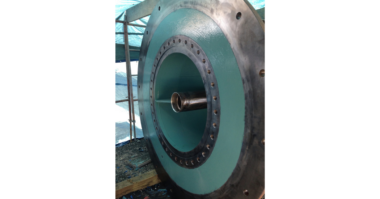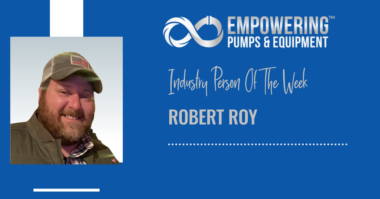In Part 3 of AW Chesterton’s series on Double/Dual Mechanical Seals they take a look at the best piping plans/support systems to put in place to increase seal/equipment reliability and reduce energy/water costs.
For any mechanical seal to perform effectively it is important that the seal be designed for the operating conditions in the equipment.
More importantly, to extend the life of a double/dual seal, you want to control the fluid film that comes into contact with the primary seal faces to establish the ideal lubrication, temperature and pressure within the seal. Across all types of mechanical seal failures, inadequate/incorrect seal support systems are the second highest cause of seal failures (Figure 1).
![AW Chesterton Support Plans for DoubleDual Mechanical Seals [Double Seals Part 3]](https://empoweringpumps.com/wp-content/uploads/2023/08/AW-Chesterton-Support-Plans-for-DoubleDual-Mechanical-Seals-Double-Seals-Part-3-2.png)
Figure 1 – Causes of Seal Failure*
Piping Plans for Double/Dual Seals
The following plans are those most recommended/used for maintaining maximum reliability for double/dual seals:
Plan 52 for Double/Dual Seals: Circulation with External Buffer Fluid Tank
![AW Chesterton Support Plans for DoubleDual Mechanical Seals [Double Seals Part 3] 52 (1)](https://empoweringpumps.com/wp-content/uploads/2023/08/AW-Chesterton-Support-Plans-for-DoubleDual-Mechanical-Seals-Double-Seals-Part-3-52-1.png)
Piping Plan 52
How It Works:
- Use only with a double/dual seal.
- The reservoir is vented to a flair, scrubber, or other collection means which maintains the buffer fluid pressure close to atmospheric pressure.
- A heat exchanger can be used when specified/required to cool the buffer fluid.
- The buffer fluid should be clean, compatible with the process, and lubricating.
- The buffer fluid cools and lubricates the outboard seal.
- The process fluid cools and lubricates the inboard seal.
Potential Issues:
- Availability of nitrogen or compressed air.
- If an inner seal leak is not detected early enough, the higher pressure process fluid will displace the buffer fluid. This can result in the process fluid completely filling the barrier fluid chamber between the inboard and outboard primary seals. Should the outer seal leak, product will be released into the atmosphere.
- Not ideal for services where products have high solids content or low vapor pressure.
Plan 53 for Double/Dual Seals: Circulation with External Barrier Fluid Tank
![AW Chesterton Support Plans for DoubleDual Mechanical Seals [Double Seals Part 3] 53](https://empoweringpumps.com/wp-content/uploads/2023/08/AW-Chesterton-Support-Plans-for-DoubleDual-Mechanical-Seals-Double-Seals-Part-3-53.png) This plan is used in services where no product leakage into the atmosphere can be tolerated. Plan 53’s biggest advantage over Plan 54DM, which does not use a tank, is its limited fluid volume. The amount of fluid that can enter the product system is limited to the volume of the barrier fluid tank itself (usually 2-3 gallons or 8-12 liters).
This plan is used in services where no product leakage into the atmosphere can be tolerated. Plan 53’s biggest advantage over Plan 54DM, which does not use a tank, is its limited fluid volume. The amount of fluid that can enter the product system is limited to the volume of the barrier fluid tank itself (usually 2-3 gallons or 8-12 liters).
How It Works:
- Use only with a double/dual seal.
- Uses a pressurized external reservoir or barrier fluid tank to provide a clean, pressurized barrier fluid to both the inboard and outboard primary seals of a pressurized double/dual seal.
- Barrier fluid pressure is higher than seal chamber pressure, typically 30 psig/2 barg
- Higher pressure barrier fluid will leak into the process fluid, exact amount is application dependent.
- Used with low viscosity, non-lubricating process fluids and fluids with low vapor pressure.
Potential Issues:
- Leakage of barrier fluid into the product will always occur to some extent. Normally this leakage will be small and can be monitored by the barrier tank fluid level. Therefore, the chosen barrier fluid must always be compatible with the process fluid.
- The tank pressure must be maintained at the proper level. If the barrier fluid tank pressure drops, the system will begin to operate like a Plan 52, or unpressurized dual seal, which does not provide the same level of sealing integrity. Specifically, the inner seal leakage direction will be reversed and the barrier fluid will, over time, become contaminated with the process fluid.
Plan 54/54DM for Double/Dual Seals: Pressurized Fluid from an External Source
![AW Chesterton Support Plans for DoubleDual Mechanical Seals [Double Seals Part 3]](https://empoweringpumps.com/wp-content/uploads/2023/08/AW-Chesterton-Support-Plans-for-DoubleDual-Mechanical-Seals-Double-Seals-Part-3-52-2.png) Plan 54Plan 54DM is used in services where the pumped fluid is hot, contaminated with solids, or both. In this plan, a cool clean fluid from an external source is supplied to the seal as a high pressure barrier fluid.
Plan 54Plan 54DM is used in services where the pumped fluid is hot, contaminated with solids, or both. In this plan, a cool clean fluid from an external source is supplied to the seal as a high pressure barrier fluid.
How It Works:
- Differs from Plan 53 in that there is no external tank; it forces a large amount of fluid flow through the seal in continuous supply.
- Directs a clean compatible fluid into and out of the dual mechanical seal barrier/buffer fluid ports.
- The purpose of this fluid is to prevent the pumped fluid from damaging the inboard seal faces, to remove heat from the seal, and to lubricate the outboard seal faces.
- The pressure of the fluid must be 30 psig/2 barg higher than the maximum sealed pressure or 30 psig/2 barg greater than the seal chamber pressure.
- The barrier fluid leakage through the inner seal goes into the product being sealed.
Potential Issues:
- Careful consideration should be given to the reliability of the barrier fluid source. When the source is interrupted or contaminated, the resulting seal failures can be very costly.
- The higher the differential pressure, the more transfer/migration into the product. The control should never be used where the barrier fluid pressure is likely to fall below seal chamber pressure.
- If this were to happen, the failure of one inboard seal from any mechanical seal in the system could contaminate the entire barrier fluid system with product and cause additional seal failures.
- Once the inboard seal wears out or fails, the amount of barrier fluid that entered the product system is virtually unlimited unless it is shut down quickly. Alerting instruments should be put in place to avoid this.
Using appropriate monitoring devices, alarms, switches, etc. will provide a means to monitor the health of your double/dual seal to identify potential issues in advance avoiding costly unplanned outages. A basic Plan 52 buffer system will have a sight glass to monitor the buffer fluid level, a pressure gauge and connections to and from the mechanical seal, as well as a vent and drain valve. Cooling coils and level switches are typically available as optional items.
A Plan 53 would have the same features as the Plan 52 with the addition of a pressure regulator, safety valve, and an optional pressure switch. These systems can be customized to meet customer specifications should they desire to have additional features incorporated into the system.
Read Part 2 of this series.

![AW Chesterton Support Plans for DoubleDual Mechanical Seals [Double Seals Part 3]](https://empoweringpumps.com/wp-content/uploads/2023/08/AW-Chesterton-Support-Plans-for-DoubleDual-Mechanical-Seals-Double-Seals-Part-3-1.png)



Comments